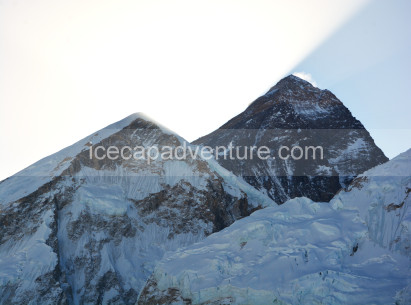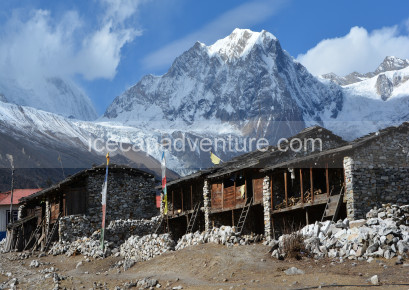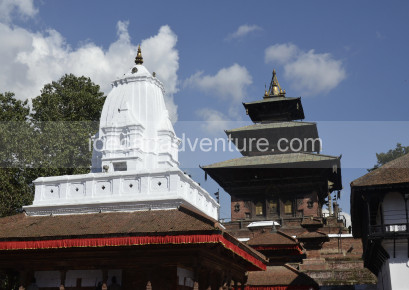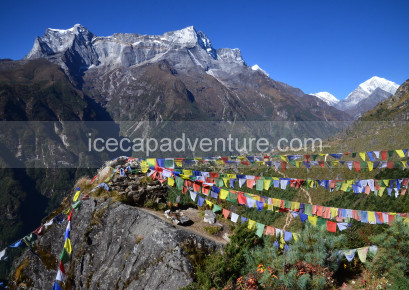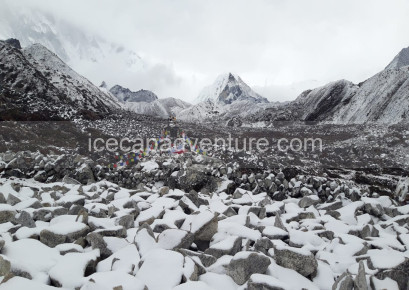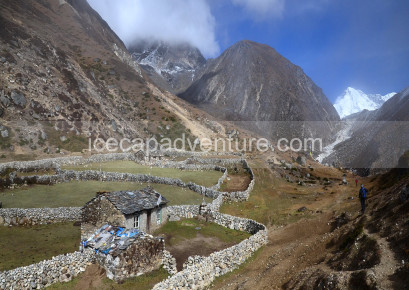.png)
.png)
.png)
.png)
.png)
.png)
.png)
Unveiling the Wonders of Mardi Himal Trekking
Mardi Himal Trekking is a hidden gem in the Annapurna Region of Nepal that offers a unique and breathtaking experience for trekkers of all skill levels. This relatively new trekking route has been gaining popularity in recent years due to its stunning views, diverse landscapes, and peaceful surroundings.
Discovering the Hidden Gems of the Annapurna Region
Unlike the more crowded and well-known treks in the Annapurna region, such as the Annapurna Circuits or the Ghorepani Poon Hill Trek Mardi Himal Trekking offers a more secluded and off-the-beaten-path experience. Trekkers have the opportunity to explore remote villages, lush forests, and high-altitude landscapes without the distraction of large crowds.
One of the highlights of Mardi Himal Trekking is the panoramic view of the Annapurna mountain range, including Machapuchare (Fishtail), Annapurna South, and Hiunchuli. The ever-changing scenery, from terraced fields to rhododendron forests to alpine meadows, makes this trek a photographer’s paradise and a nature lover’s dream.
Why Mardi Himal Trek is a Must-Do
Mardi Himal Trekking is a must-do for anyone looking to experience the beauty and tranquility of the Himalayas without the hustle and bustle of more popular trekking routes. The diverse landscapes, stunning views, and peaceful surroundings make this trek a truly memorable and rewarding experience.
Whether you’re a seasoned trekker or a first-time hiker, Mardi Himal Trekking offers something for everyone. With a moderate level of difficulty and options for shorter or longer itineraries, this trek is accessible to trekkers of all ages and fitness levels. Don’t miss out on the opportunity to discover the hidden gem of the Annapurna region—Mardi Himal Trekking awaits you.
Planning Your Mardi Himal Trek
Embarking on the Mardi Himal trek is a thrilling adventure that requires careful planning to ensure a safe and enjoyable experience. Before setting off on your journey, it is worth considering various factors, such as the best time to visit, the necessary gear you will need, and understanding the trekking route.
Best Time to Embark on Your Journey
The best time to trek to Mardi Himal is during the spring (March to May) and autumn (September to November) seasons. During these months, the weather is relatively stable, with clear skies and mild temperatures, making it ideal for trekking. The spring season offers breathtaking views of blooming rhododendron forests, while the autumn season provides stunning panoramic views of the surrounding Himalayan peaks.
Accommodation and Food Along the Trail
During your Mardi Himal trek, you will come across various guesthouses, teahouses, and lodges that offer accommodation and meals along the trail. These accommodations provide basic amenities such as a bed, warm blankets, and hot meals cooked by local chefs. Most lodges offer a variety of dishes, including traditional Nepali dal bhat (rice and lentils), noodles, soups, and tea. It is essential to carry some cash, as ATMs are scarce in the remote areas of the trek. Additionally, don’t forget to refill your water bottles at designated water stations to stay hydrated throughout the journey.
As you plan your Mardi Himal trek, remember to pack wisely, acclimatize properly, and be prepared for the stunning landscapes and challenges that await you along the trail. With the right gear and a positive mindset, you are sure to have an unforgettable and rewarding trekking experience in the heart of the Himalayas.
Stay Safe and Respect the Environment
Safety should always be a top priority while trekking in the Himalayas. Make sure to pack essential items such as a first aid kit, extra layers of clothing, and enough food and water for your trek. It’s also important to respect the environment and the local communities you encounter along the way. Dispose of your waste properly, follow designated trails, and be mindful of the wildlife around you. By leaving no trace and showing respect to the land and its inhabitants, you are helping to preserve this beautiful and fragile ecosystem for future generations to enjoy.
Trip Highlights:
- Gurung and Magar culture.
- Walk through the alpine landscapes in the isolated trail.
- Green Forest Valley.
- Close to Mt. Annapurna, Machhapuchhare, and Mardi Himal.
- Different types of birds are observed.
1
We will be waiting to welcome you at Tribhuvan International Airport, Kathmandu, where you will be greeted with a traditional Nepali flower garland to mark your arrival. After the warm welcome, we will drive you to your hotel—approximately 30 minutes during the day and 20 minutes at night.
Upon reaching the hotel, you will be offered welcome drinks and biscuits, followed by the settlement of your rooms. Once settled, please join us back in the lobby or meeting hall for a briefing about your trekking and tour program on the Mardi Himal Trek, including an introduction to your trekking guide and other relevant details. After the briefing, you will have the opportunity to check your trekking equipment with your guide.
Note: If you arrive in Kathmandu at night, these activities will be scheduled for the following day after breakfast and meals.
.png)
.png)
.png)
.png)
2
After breakfast at the hotel, you will have time to explore Kathmandu’s cultural heritage sites, such as Kathmandu Durbar Square, Swayambhunath (Monkey Temple), or Boudhanath Stupa, and you will have the day to prepare for your trek.
Our team will assist you in checking your gear and ensuring you have all the necessary equipment for the journey ahead. If you need to buy or rent any trekking gear, we will guide you to the best shops in Thamel, where you can find quality items at reasonable prices.
In the evening, your trekking guide will conduct a final briefing about the trek, including route details, safety measures, and expected weather conditions. Overnight stay at a hotel in Kathmandu.
.png)
.png)
.png)
.png)
3
After breakfast in Kathmandu, set off on a scenic drive to Pokhara, Nepal’s famous lake city and the gateway to the Annapurna region. The journey along the Prithvi Highway takes approximately 6 to 7 hours, winding past the Trishuli and Marsyangdi Rivers with stunning views of terraced hillsides, waterfalls, and traditional villages. Along the way, you’ll witness rural Nepali life and rolling green landscapes, making the drive an experience in itself. As you approach Pokhara, the snow-capped peaks of Annapurna and Machapuchare (Fishtail) gradually appear on the horizon, creating a breathtaking welcome. Upon arrival, check into your hotel and enjoy free time by the tranquil Phewa Lake or explore the bustling lakeside district filled with cafés, shops, and cultural charm.
Highlights of the Day:
-
Picturesque drive through river valleys, farmland, and local settlements.
-
First glimpse of the Annapurna and Machapuchare ranges.
-
Arrival in Pokhara, a peaceful city known for its lakes and mountain scenery.
-
Leisure time to relax or explore the lively lakeside atmosphere.
.png)
.png)
.png)
.png)
4
After an early breakfast in Pokhara, take a short and scenic one-hour drive to Kade, the starting point of your trek into the Annapurna region. From Kade, begin your ascent on well-paved stone steps that wind through lush rhododendron and oak forests. The trail gradually climbs past small villages and terraced fields, offering beautiful glimpses of the Annapurna and Lamjung Himal ranges. The walk is steady but rewarding, with opportunities to rest and enjoy the serene Himalayan landscapes along the way. By afternoon, you’ll reach Pitham Deurali (2,100m), a peaceful settlement nestled along the ridge, where you can enjoy spectacular sunset views over the valleys and mountains.
Highlights of the Day:
-
Short scenic drive from Pokhara to the trailhead at Kade.
-
Trek through rhododendron forests, stone staircases, and terraced farmland.
-
Panoramic views of Annapurna, Lamjung Himal, and surrounding peaks.
-
Overnight stay in the quiet mountain village of Pitham Deurali.
.png)
.png)
.png)
.png)
5
After breakfast in Pitham Deurali, begin your trek toward Forest Camp, following a serene trail that passes through dense forests of rhododendron, oak, and maple. The path ascends gradually, providing a peaceful atmosphere with birdsong and occasional mountain glimpses through the trees. Unlike the busier routes of the Annapurna region, this section of the Mardi Himal trek feels tranquil and untouched, offering a sense of walking deep into the wilderness. After a steady 3 to 4 hours of trekking, you’ll arrive at Forest Camp (2,520m), a quiet resting spot surrounded by thick woodlands. Spend the evening enjoying a warm meal at a local teahouse and soaking in the calm mountain environment.
Highlights of the Day:
-
Peaceful forest walk through rhododendron and oak trees.
-
Gradual ascent with occasional openings to Himalayan views.
-
Experience the quieter side of the Annapurna region.
-
Arrival at the secluded Forest Camp, ideal for rest and acclimatization.
.png)
.png)
.png)
.png)
6
Today’s trek leads you higher into the heart of the Mardi Himal region. After breakfast at Forest Camp, follow the well-marked trail that steadily ascends through lush rhododendron and oak forests. As you climb, the vegetation begins to thin out, and sweeping views of the Annapurna South, Machapuchare (Fishtail), and Hiunchuli peaks gradually open up. The air feels fresher and cooler as you gain altitude, and the landscapes transition from dense woodland to more open ridges. After 4 to 5 hours of steady trekking, you’ll reach Badal Danda (2,970m), a spectacular ridge-top viewpoint. True to its name, “Badal Danda” (Cloud Hill) often greets visitors with a sea of drifting clouds below and towering peaks above—creating a surreal, dreamlike atmosphere. Overnight at a cozy teahouse where you can enjoy mountain hospitality and stunning sunset views.
Highlights of the Day:
-
Gradual ascent through rhododendron and oak forests.
-
Expansive Himalayan views opening along the ridge.
-
Unique cloud formations at Badal Danda, also called “Cloud Hill.”
-
Stunning sunset and peaceful overnight stay at a ridge-top teahouse.
.png)
.png)
.png)
.png)
7
After breakfast at Badal Danda, continue your ascent along a narrow ridge trail toward High Camp. The trek takes around 3 to 4 hours, gradually climbing above the tree line into open alpine landscapes. The rhododendron forests give way to grassy slopes and rugged terrain, offering uninterrupted panoramic views of the Annapurna South, Hiunchuli, Machapuchare (Fishtail), and Mardi Himal peaks. The air becomes cooler and thinner as you gain altitude, making today’s trek both exhilarating and rewarding. Upon reaching High Camp (3,540m), you’ll be greeted with breathtaking 360° Himalayan vistas. This is an excellent place to rest, acclimatize, and prepare for the highlight of the trek—the hike to Mardi Himal Base Camp. Evening sunsets here are spectacular, painting the sky with vibrant colors over the snow-capped peaks.
Highlights of the Day:
-
Trekking above the tree line with ever-expanding mountain views.
-
Scenic ridge trail with dramatic drops and open skies.
-
Close-up vistas of Machapuchare (Fishtail) and Annapurna South.
-
Overnight stay at High Camp with a spectacular Himalayan sunset.
.png)
.png)
.png)
.png)
8
Today is the most exciting and adventurous day of the Mardi Himal Trek. After an early morning breakfast at High Camp, you begin your hike toward the Mardi Himal Base Camp, situated at an altitude of around 4,500 meters. The trail is steep and rocky, but it offers a rewarding experience with panoramic views of the Annapurna Sanctuary, Mardi Himal, Machhapuchhre (Fishtail Mountain), Hiunchuli, and surrounding peaks.
As you gradually ascend, the path passes through alpine meadows and rugged ridgelines, where the crisp mountain air and silence of the Himalayas create a peaceful trekking atmosphere. The final stretch to the base camp provides breathtaking close-up views of Machhapuchhre’s striking face, one of the highlights of the journey.
After spending some memorable time at Mardi Himal Base Camp, enjoying the incredible vistas and taking photographs, you retrace your steps back to High Camp for a short rest. From here, you continue descending to Low Camp through lush rhododendron forests. The descent takes you into warmer altitudes with greenery and birdlife, offering a pleasant contrast to the barren high-altitude landscape.
Highlights of the Day:
-
Sunrise hike to Mardi Himal Base Camp with panoramic Himalayan views.
-
Stunning close-up views of Machhapuchhre (Fishtail), Annapurna South, and Hiunchuli.
-
A rewarding mix of alpine landscapes and lush forests.
-
Experiencing both high-altitude adventure and peaceful lower-altitude surroundings in a single day.
.png)
.png)
.png)
.png)
9
After breakfast at Low Camp, you begin your final trekking day of the Mardi Himal journey. The trail descends through beautiful rhododendron and oak forests, accompanied by the melodies of birds and the fresh mountain breeze. As you move lower, the landscapes gradually change from alpine settings to lush green hills and charming Gurung villages.
The trek from Low Camp to Pitam Deurali takes about 4–5 hours at a relaxed pace. Pitam Deurali is a scenic spot on the ridge that connects different trekking routes of the Annapurna region. Here, you can enjoy your last panoramic views of Machhapuchhre, Annapurna South, and Mardi Himal, before bidding farewell to the high mountains.
From Pitam Deurali, a short 1-hour drive brings you back to Pokhara, the vibrant lake city. Upon arrival, you can relax by Phewa Lake, enjoy a warm shower, and celebrate the successful completion of your Mardi Himal adventure.
Highlights of the Day:
-
Scenic descent through rhododendron and oak forests.
-
Last mountain views from Pitam Deurali.
-
Easy drive back to Pokhara.
-
Leisure time to relax by Phewa Lake and enjoy the lakeside atmosphere.
.png)
.png)
.png)
.png)
10
After breakfast in Pokhara, begin your return journey to Kathmandu along the scenic Prithvi Highway. The drive takes around 6 to 7 hours, tracing the banks of the Trishuli River with beautiful views of rolling hills, green valleys, and traditional villages along the way. It’s a chance to reflect on your trekking adventure while enjoying glimpses of rural Nepali life. Short stops are made en route for refreshments and lunch. Upon arrival in Kathmandu (1,350m), you’ll be transferred to your hotel. In the evening, you can relax, enjoy the comforts of the city, or explore the lively streets of Thamel for last-minute shopping and a farewell dinner.
Highlights of the Day:
-
Scenic overland journey along river valleys and terraced hillsides.
-
Glimpses of Nepali countryside, villages, and daily life.
-
Return to Kathmandu, Nepal’s vibrant capital city.
-
Opportunity for leisure, shopping, or a celebratory farewell meal.
.png)
.png)
.png)
.png)
11
After breakfast at your hotel in Kathmandu, your trekking and travel adventure comes to an end. Depending on your flight schedule, you may have some free time to explore the city, shop for souvenirs, or simply relax and soak in the unique cultural atmosphere of Nepal’s capital. Later, you will be transferred to Tribhuvan International Airport for your onward journey. Airport transfers are arranged to ensure a smooth departure, giving you time to check in comfortably and reflect on the memories of your Himalayan adventure.
Highlights of the Day:
-
Leisure time in Kathmandu for last-minute shopping or sightseeing.
-
Transfer to Tribhuvan International Airport for departure.
-
Opportunity to reminisce about the Annapurna region and Mardi Himal trek.
.png)
.png)

Didn’t find what you were looking for?
So why not plan your own trip. It takes only 2 minutes.- Airport Pick up and transfers to hotel.
- All accommodation in Kathmandu, Pokhara and trekking.
- Full board meal such as breakfast, Lunch and dinner during the Trekking.
- Properly 3 time tea and coffee whatever hot drink available
- Experience professional trekking guide, sub guide and porters
- Full support crew with 1 porter for every 2 trekkers.
- Full insurance for guide and porters.
- Trekking maps and notebooks.
- All transportation from the starting to ending points of the trip
- National park entry fee and TIMS card or trekking permit whatever needed.
- Down Sleeping bag -20, and must be returned after completion of trek.
- All taxes as necessaries by Nepal government
- First Aid Kit for staff.
- Trekking achievement certificate after completed the Treks
- All international flight tickets, travel insurance and Nepal entry visa fees.
- Lunch and dinner in Kathmandu.
- All hard drinks such as : Mineral water, whisky, rum, cola, fanta, etc.
- Extra entrance fees such as Museum, Monastry, Temple, Boating, etc.
- Personal expenses like hot shower and battery charge / wifi during trekking only.
- Personal equipment and insurance .
- Extra night hotel in Kathmandu if arriving late or early departure than scheduled itinerary.
- Any emergency rescue evacuation and extra cost offering from unfavorable circumstance such as weather bad.
- Personal tips for trekking staff.

✅ Clothing
-
Base Layers (Thermal Tops & Bottoms)
-
Trekking Shirts (Long & Short Sleeves)
-
Fleece Jacket / Warm Mid-layer – For insulation.
-
Down Jacket – Essential for nights above 3,500m.
-
Waterproof & Windproof Jacket (with hood).
-
Trekking Pants (lightweight, quick-drying).
-
Warm Trekking Pants (for high altitude).
-
Waterproof Pants (for rain/snow).
-
Underwear – Comfortable, quick-dry.
-
Sports Bras (for women).
✅ Head & Hand Wear
-
Warm Hat / Beanie and Sun Hat / Cap.
-
Buff / Neck Gaiter / Scarf.
-
Sunglasses and Gloves 2 pairs
✅ Footwear
-
Trekking Boots – Sturdy, waterproof, broken-in.
-
Lightweight Shoes / Sandals – For camp/teahouse.
-
Warm Trekking Socks – At least 4–5 pairs.
✅ Sleeping & Bags
-
Sleeping Bag (Down -15°C) and Liner.
-
Duffel Bag (carried by porter).
-
Daypack (30–40L) – For personal items.
-
Rain Cover for Backpack.
✅ Trekking Gear
-
Trekking Poles & Gaiters – For snow or muddy.
-
Headlamp (with extra batteries).
-
Water Bottles (2–3 liters) and Water Purifications.
-
Personal First Aid Kit
-
Snacks / Energy Bars / Dry Fruits.
✅ Accessories & Personal Items
-
Sunscreen (SPF 30–50) and Lip Balm with SPF.
-
Toiletries and Hand Sanitizer.
-
Towel (quick-dry) and Toilet Paper
-
Camera / Power Bank / Solar Charger.
✅ Documents & Money
-
Valid Passport and Visa.
-
Travel Insurance (cover high-altitude & helicopter rescue).
-
Cash (Nepali Rupees) – For personal expenses.
Good to Know – Mardi Himal Trekking
-
Best Seasons to Trek:
The ideal time for the Mardi Himal Trek is during spring (March–May) and autumn (September–November). These months offer clear skies, vibrant rhododendron forests, and stunning panoramic mountain views. Winter (December–February) provides crisp weather and quiet trails, while monsoon (June–August) brings lush greenery but wet and slippery paths. -
Altitude Awareness:
The trek’s highest point, Mardi Himal Base Camp, is at 4,500 meters. Although considered moderate in altitude, trekkers should still take care to avoid altitude sickness by pacing themselves, staying hydrated, and acclimatizing as needed. -
Physical Fitness:
The trek is graded moderate, suitable for hikers with basic to good fitness levels. Daily trekking usually ranges from 5–7 hours, involving uphill climbs, forest trails, and some steep sections. Previous hiking experience helps but is not mandatory. -
Permits Required:
Trekkers need Annapurna Conservation Area Permit (ACAP) and a Trekkers’ Information Management System (TIMS) card. Both can be obtained easily in Pokhara before starting the trek. -
Accommodation and Meals:
The trail has teahouses and lodges offering simple rooms with shared bathrooms. Meals typically include dal bhat, noodles, soups, pancakes, and tea/coffee. Lodges at higher elevations may have limited options and higher prices. -
Drinking Water:
Bottled water is available, but it’s recommended to use a reusable water bottle along with water purification tablets or filters to reduce plastic waste. Boiled water is available at most lodges for a small charge. -
Packing and Gears:
Essentials include layered clothing, a warm jacket, sturdy trekking shoes, trekking poles, rain gear, hat and gloves, headlamp, sunscreen, power bank, and a first aid kit. A sleeping bag is advisable for extra warmth at higher elevations. -
Transportation and Route:
The trek usually starts from Phedi or Kande, accessible via a 1–1.5 hour drive from Pokhara. The trail passes through lush forests, terraced fields, and remote villages, offering a mix of natural beauty and cultural encounters. -
Travel Insurance:
Comprehensive travel insurance is strongly recommended, covering medical emergencies, trekking at high altitudes, and unexpected events. -
Connectivity and Charging:
Mobile signal is generally available along the trail, though it may weaken near the base camp. Charging facilities are provided in lodges, often for a small fee. Carrying a power bank is advisable. -
Highlight Experience:
The trek offers breathtaking views of Annapurna South, Machhapuchhre (Fishtail), Hiunchuli, and Mardi Himal. The relatively less crowded trail makes it perfect for trekkers seeking peaceful nature walks, sunrise panoramas, and Himalayan photography opportunities.

